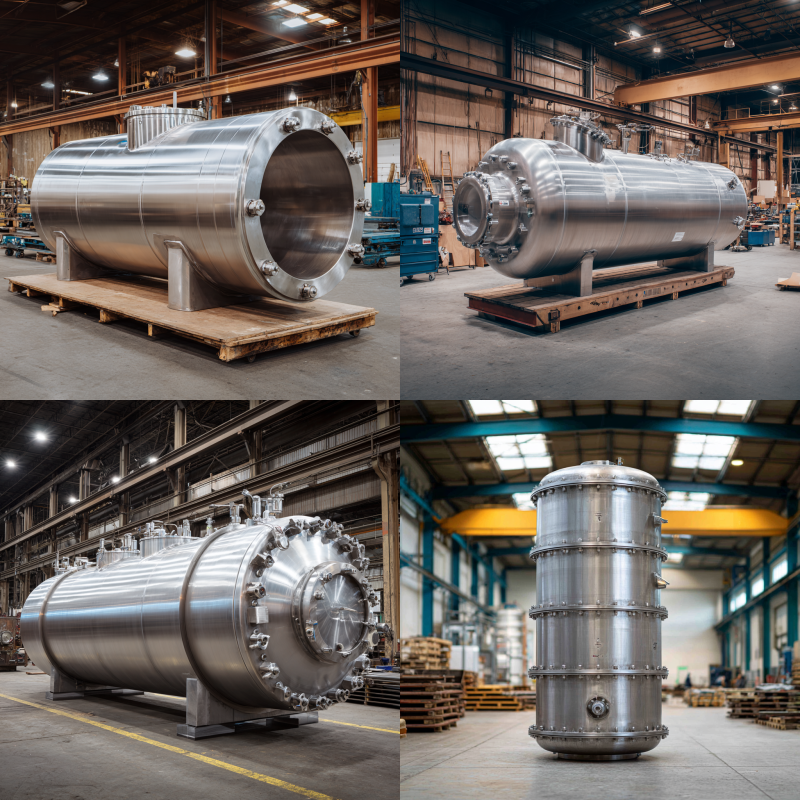
What Is the Cost of Stainless Steel Pressure Vessels
Understanding What Is the Cost of Stainless Steel Pressure Vessels
Have you ever wondered what is the cost of stainless steel pressure vessels and why they often come with a higher price tag? Good news, it’s not as mysterious as it sounds. Prefabrication studies show that building complex components in a controlled environment can cut on-site labor and inspection time, lowering overall expenses. When you factor in design complexity, ASME certifications, and material durability, you start to see why no single number can represent every situation when determining what is the cost of stainless steel pressure vessels. Still, there are guiding principles that help you understand how costs stack up and what you get in return for your investment.
What is the cost of stainless steel pressure vessels
This question rarely has a one-size-fits-all answer. Some vessels are used for oil and gas operations, others for power generation, and still others for commercial or public works. Each application demands specific sizes, internal pressures, and corrosion resistance. That’s why talking about “the cost” usually means looking at a handful of core factors:
- Materials: Stainless steel itself is a premium option. It resists rust and handles harsh conditions, which typically drives up raw material expense compared to carbon steel.
- Design requirements: Thicker walls, additional welds, or extra components raise the total bill. A specialized project may need more engineering hours.
- Compliance: ASME certification, such as U and R stamps, ensures safety and reliability but often adds to upfront costs. You can learn more about these stamps at how much does an ASME pressure vessel cost.
- Labor and expertise: Skilled welders, inspectors, and engineers each contribute to total price. For more on how design influences fabrication steps, check out what is pressure vessel fabrication.
- Prefabrication approach: Producing vessels or modules off-site can help reduce on-site labor, shipping, and inspection time. This efficient process ultimately helps many facility owners stay within budget.
Key cost drivers in manufacturing
While the general categories above offer a broad view, the details matter just as much. Here are some of the top drivers shaping the final price:
Engineering complexity
You might need custom nozzle placements or reinforced sections that require extra analysis. For example, Red River specializes in Custom/OEM Pressure Vessels, adapting every design to specific pressures, flows, or even corrosive environments.
Welding methods and quality control
Stainless steel often needs careful welding techniques to maintain its corrosion resistance and structural integrity. ASME-certified fabrication shops, such as stainless steel pressure vessel manufacturers, use rigorous inspections and total material traceability.
Safety considerations
High-pressure service raises the stakes. A well-tested vessel made by an ASME-certified manufacturer can cost more up front, but it can pay off in better safety records and fewer surprises down the road.
Project timeline
Rush orders typically add to the bottom line. If you plan your project with enough lead time, manufacturers can integrate the build into their schedules for smoother and less costly production.
Prefabrication for cost efficiency
Prefabrication brings major benefits to stainless steel pressure vessel projects. By building modules in a dedicated facility, you can catch fitting issues long before they appear on-site. A fully assembled module ships ready to install, cutting transport hours and potential rework. This approach leads to less wasted material, minimized on-site exposure hours, and often fewer unexpected costs. Red River, for instance, has consistently shown that creating prefabricated facilities, modules, and packages helps clients reduce risk and maintain leaner budgets.
The ability to test systems before they reach your site also keeps timelines more predictable. That means you’re less likely to encounter surprise costs or delays once installation begins. Prefabrication is a clear example of spending smarter: you invest in quality checks up front, and you reap the rewards in simpler, safer on-site work.
What Is the True Cost of Stainless Steel Pressure Vessels
What is the cost of stainless steel pressure vessels? The answer depends on design complexity, materials, compliance requirements, and how much fabrication occurs off-site. Prefabrication is a proven strategy to control expenses while ensuring high quality and timely delivery when determining what is the cost of stainless steel pressure vessels for your project.
Partnering with an ASME-certified manufacturer gives you peace of mind, knowing your investment meets strict industry standards and will perform reliably for years. That higher upfront cost often pays for itself in reduced maintenance, improved safety, and longer service life.
Need a reliable partner?
Red River specializes in the design and manufacturing of pressure vessels. We also fabricate related items such as prefabricated spools and modular skids.
Reach out to us today and experience the Red River difference. Where American-made products and American Values come together, we care more.
Frequently Asked Questions
1. What is a stainless steel pressure vessel?
A stainless steel pressure vessel is a closed container engineered to hold gases or liquids at pressures significantly different from ambient pressure, constructed from corrosion-resistant stainless steel alloys and designed to meet strict safety codes like ASME standards for use in industries such as chemical processing, food production, and pharmaceuticals.
2. What are stainless steel pressure vessel manufacturers?
Stainless steel pressure vessel manufacturers are specialized fabrication companies that design, engineer, and build custom pressure vessels using stainless steel materials, typically holding ASME certifications and offering services from initial design consultation through final testing, delivery, and installation support for various industrial applications.
3. Can prefabrication truly lower costs?
Yes. Producing your vessel or module off-site can reduce on-site labor hours, shipping time, and conflicts during installation. Prefabrication also helps identify design issues early, cutting rework expenses.
4. Are there hidden fees beyond manufacturing?
You might have extra costs for shipping, site preparation, on-site integration, and post-installation inspections. Planning for these helps you avoid surprises.
5. How do I pick the right vessel manufacturer?
Look for proven experience, ASME certification, and a robust safety track record. Asking about past projects in your industry is also a smart first step.
6. Do custom vessels cost more?
Typically, yes. A one-off design may need extra engineering hours and specialized components. However, a custom vessel is more likely to match your performance needs precisely.
Key takeaways
- Stainless steel resists corrosion, boosting long-term reliability and often justifying a higher initial investment.
- Engineering complexity, labor expertise, and materials each factor into overall project costs.
- ASME certification is vital for safety, which can increase costs but brings greater peace of mind.
- Prefabrication off-site streamlines shipping, testing, and installation, minimizing surprises and cutting total expenses.
- Planning ahead and working with a trusted manufacturer helps contain costs and maintain quality.
